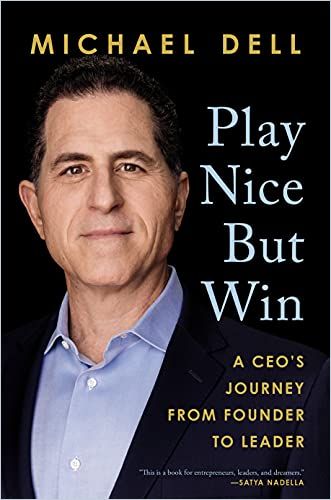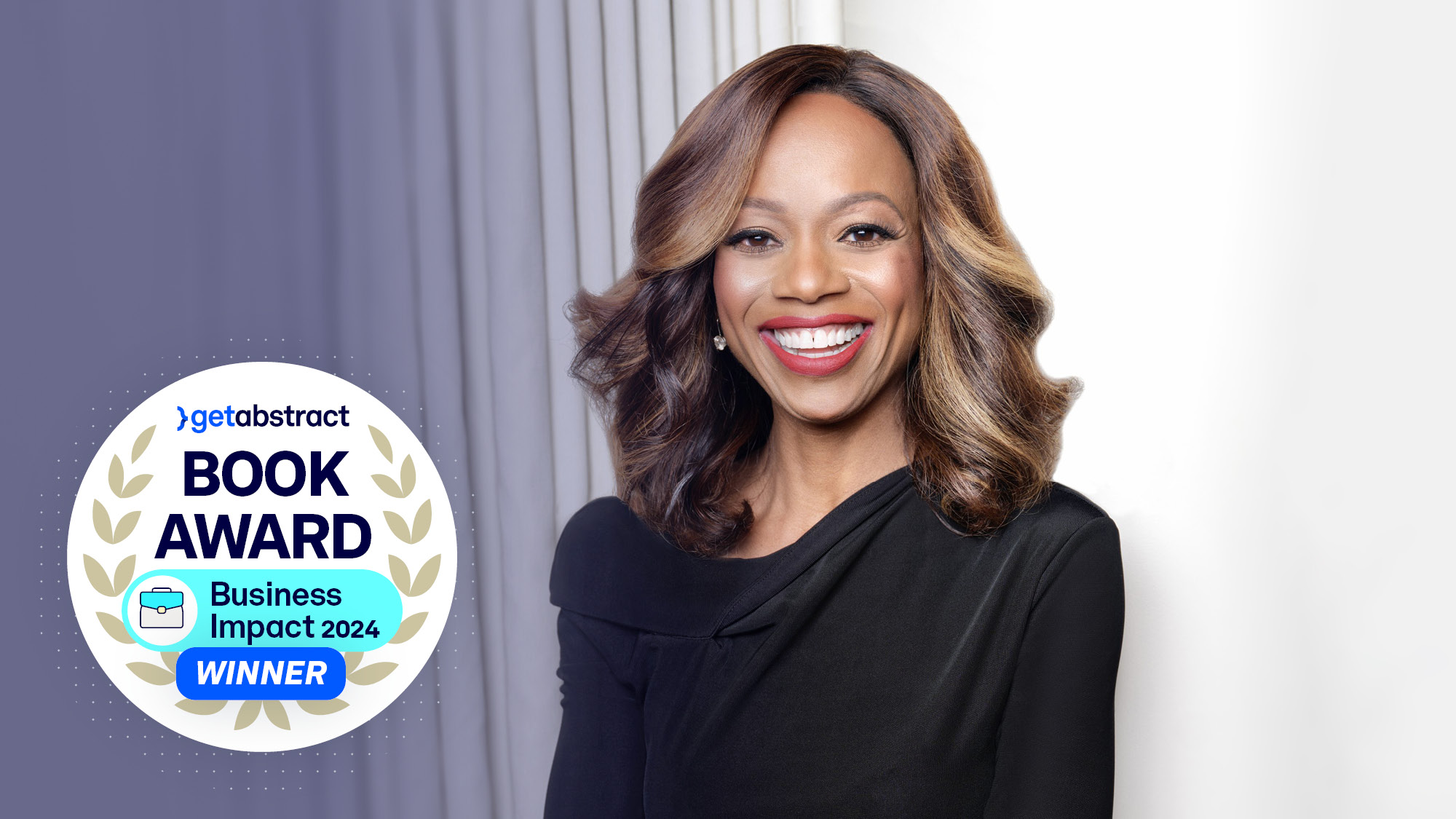Michael Dell, chairman and CEO of Dell Technologies, recounts how he built his company from nothing and persevered through management issues and corporate raids to keep his business strong.

One Man, One Company
Driven Entrepreneur
When Michael Dell, future chairman and CEO of Dell Technologies, headed out to play ball in the neighborhood, his parents always told him, “Play nice but win.”
By age 13, Dell had saved $1,298 from working part-time jobs to buy an Apple II computer. His parents were appalled when he opened the box and disassembled the machine. Obsessed with computers, he needed to know how they worked.
When Dell graduated from high school, he bought off-the-shelf IBM PCs and souped them up with new disk drives, hard drives, and memory chips. Then, he sold his upgraded creations at a profit to professionals seeking high-performing computers.
My surgically altered IBM PCs were selling almost as fast as I could upgrade them.Michael Dell
Dell began winning Texas state contracts. His business grossed between $50,000 and $80,000 monthly, but he was turning almost no profit. Despite his parents’ disapproval, he dropped out of college and founded the Dell Computer Corporation in 1984.
Building the Company
Dell explains that IBM and Compaq, the dominant PC players in the 1980s, didn’t realize he was building a viable business at their expense. His company grew to 60 employees occupying a 30,000-square-foot space. Dell kept a bed in his office and seldom went home to sleep.
In 1985, Dell introduced its first branded computer, the Turbo PC, selling it by phone or mail order for $795. Comparable IBM or Compaq models cost more than $1,500.Dell’s company doubled in size annually, but it remained on a precarious financial footing. The Texas economy was cratering, and Dell’s $600,000 line of credit was in jeopardy because his bank was on the verge of failure.
At age 21, Dell was running his company by himself – no board, no executives, and no venture capitalists offering money and advice. In 1986, he convinced Lee Walker, an experienced executive, to join the company as president. Walker immediately fired Dell’s chief financial officer and chief accounting officer – a husband-and-wife team who demanded $50,000 to not destroy the company with “buttons they could push and levers they could pull.”
Going Public
Dell’s sales grew to $33 million in 1986 and doubled to $60 million in 1987, but the company had only $300,000 cash on hand. To raise cash, he turned to Wall Street. When the stock market crashed in October 1987, Dell was the only new placement that survived the carnage. When he filed to go public in 1988, IBM hit his firm with a cease-and-desist order, accusing Dell of infringing on its patents. Dell signed a licensing agreement with IBM and went public on NASDAQ in June 1988.
We were outgrowing everything: our abilities, our systems, our people. And our capital structure.Michael Dell
Walker departed the company in 1990, and, in a move Dell now says was unwise, he took aim at Compaq’s high-end server business. Dell bought pages in PC Magazine to advertise servers that cost less than half the roughly $25,000 Compaq charged. But the effort fell flat: the company had grown by connecting with ordinary consumers, something it hadn’t yet done with corporate buyers.
Dell kept growing, landing on the Fortune 500 in 1991 as a seven-year-old company run by a 26-year-old with revenues north of $500 million. Dell soon hit $2 billion in revenues, but the number proved both cause for celebration and a wake-up call. He found that his company was expanding faster than its capacity to manage its thousands of employees. Dell vividly recalls his struggle to hire good people. He dealt with a new manager who had a severe drinking problem, and a vice president who hired his mistress, a stripper, for a no-show job. The sober-minded Dell never would have contemplated such behavior himself. He realized he had to professionalize his fast-growing operation.
I was proud of all of our products, but in the early ’90s it was painfully clear that our notebooks were our technological Achilles heel.Michael Dell
Dell says his laptops were another weak link. The company had made its name selling PCs, and in the early 1990s, it committed to improving that part of its product line. Dell wavered between remaining a direct-to-consumer brand and accepting distribution by big-box retailers.
Going Private
By 2005, Dell Computers had become a corporate darling. It sold more than 18% of all personal computers, and was named Fortune magazine’s most-admired company.
But by 2012, Dell shares had plummeted, and the company’s attempt at a smartphone-tablet hybrid had flopped. Egon Durban of the private equity firm Silver Lake Partners approached Michael Dell about taking the company private. They believed his low price represented a buying opportunity.Dell’s board eventually approved a $24.4 billion leveraged buyout.
A major shareholder, Southeastern Asset Management, immediately objected. It owned 8.5% of Dell and had spent nearly $2.3 billion on its stake. The buyout at $13.65 a share would mean Southeastern faced a loss of about $270 million on its investment. Eventually, Southeastern settled on a fair buyout price of $23.72 – which happened to be the trading values of shares in 2007, when Michael Dell stepped down as CEO and became chairman.
In March 2013, Dell was blindsided when corporate raider Carl Icahn amassed 6% of his company’s shares. One of Icahn’s proposals called for paying $15 a share for 58% of Dell, and leaving the rest public.
The way I describe this when talking with businesspeople is that the domain of technology is no longer in the IT department; the whole company is technology. I’m talking about all companies.
Icahn’s claim that Michael Dell was buying the company with his shareholders’ money was fiction. So was his insistence that Dell would get a $450 million breakup fee if the deal fell through – that fee would go to Silver Lake Partners, not Dell. Dell visited Icahn at his Manhattan home to dig into the raider’s plans. He realized that Icahn was actually clueless and was operating like a poker player trying to win at any cost.
Dell fought Icahn to defend the company that bore his name and its 110,000 employees. By 2017, Dell was privately held. In the first quarter of that year, revenue outpaced expectations by $1 billion.
Relatable Billionaire
Michael Dell, chairman and CEO of Dell Technologies, proves to be a relatable tech billionaire. He doesn’t position himself as a genius such as Bill Gates or Steve Jobs, but, rather, as an innovative entrepreneur. Dell says he built his career on avoiding lawsuits, regulatory actions, and unsavory headlines, while offering reliable, affordable tech.Dell is honest enough about his foibles, and his autobiography proves an intriguing read – especially when he takes the gloves off over his dealings with corporate raider Carl Icahn.Michael Dell played nice, and he won.






